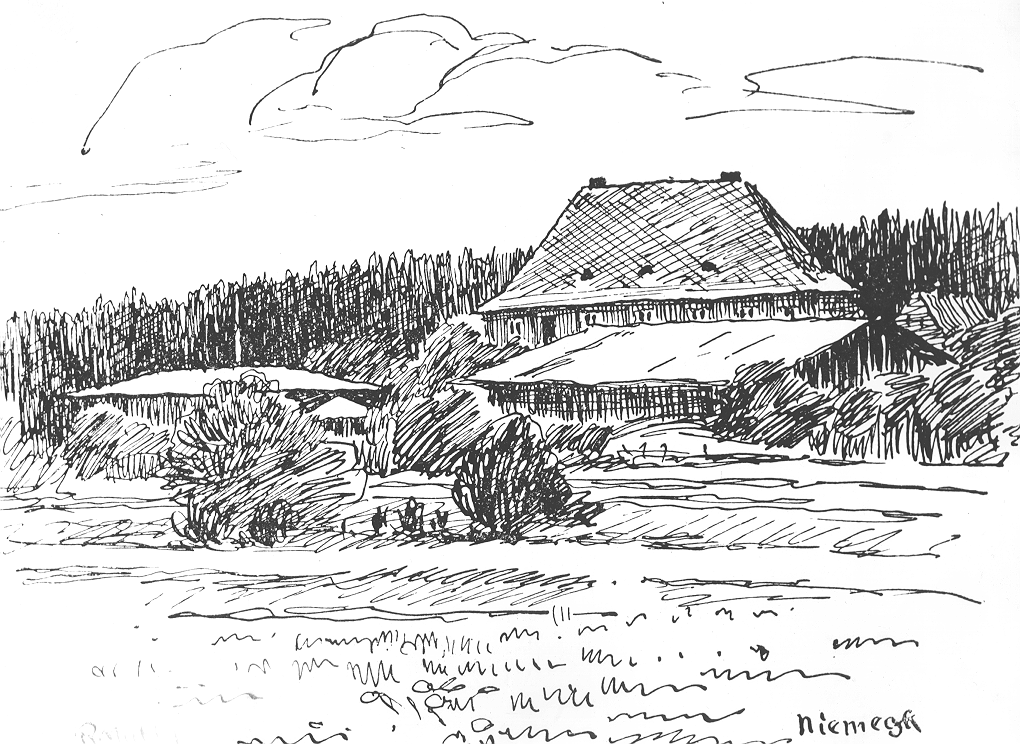
View of the measurement buildings of the Adolf Schmidt Observatory at Niemegk in 1932
Managing the Magnetic Observatory
In addition to his excellent scientific work ADOLF SCHMIDT managed the magnetic observatory very efficiently and raised it to its world wide reputation.
He was always anxious to secure and improve the accuracy and reliability
of both the absolute geomagnetic measurements and the continuous recording.
Many technical and mathematical innovations were initiated, which are described
in more detail in the observatory yearbooks.
In particular, he took care that the highly sensitive magnetic recordings
in Potsdam were not influenced by industrial disturbances. In all, he was
forced to intervene three times. The first time was when electrical towing
was started on the Teltow-Canal in 1903 and 1904; the second time was when
the Potsdam horse tramway was electrified in 1907. ADOLF SCHMIDT
thought it to be the right moment to transfer the geomagnetic recordings
from Potsdam to Seddin. On his initiative a small observatory was built on
the Seddiner See, where continuous geomagnetic recordings took place.
When in 1928 the Berlin suburban railway was electrified, it was clear that
absolute measurements could no longer be made in Potsdam. However, SCHMIDT realised that disturbances were also affecting the recordings in Seddin, and that this situation would only get worse.

Consequently, he made the farsighted decision to relocate
the observatory completely to a new site, which would allow operation undisturbed
from technical and urban influences for the foreseeable future. He selected
the site of the new observatory himself. He decided for the small Brandenburg
town of Niemegk, 50 km from Potsdam. There, near the woods, the Observatory
for Geomagnetism, named after him and now internationally known, was built
according to his plans.
The observatory was officially inaugurated on 23 July 1930, at the occasion of ADOLF SCHMIDT's 70th birthday.
